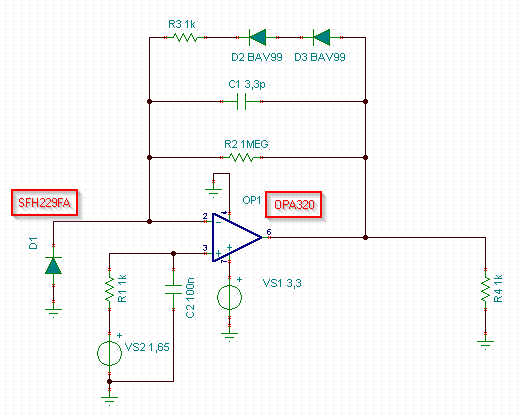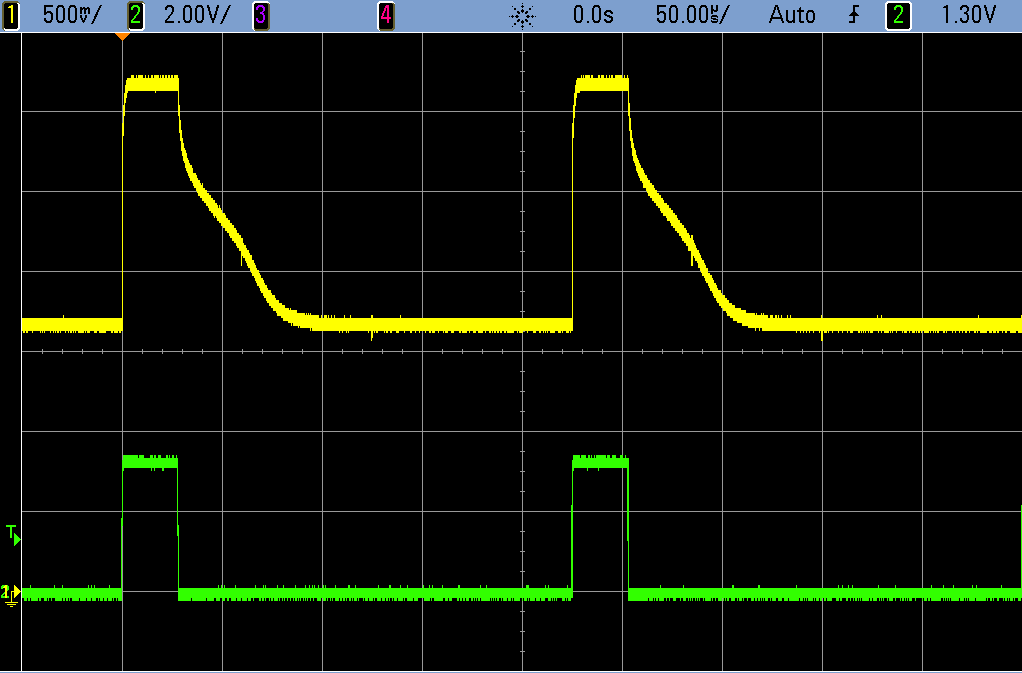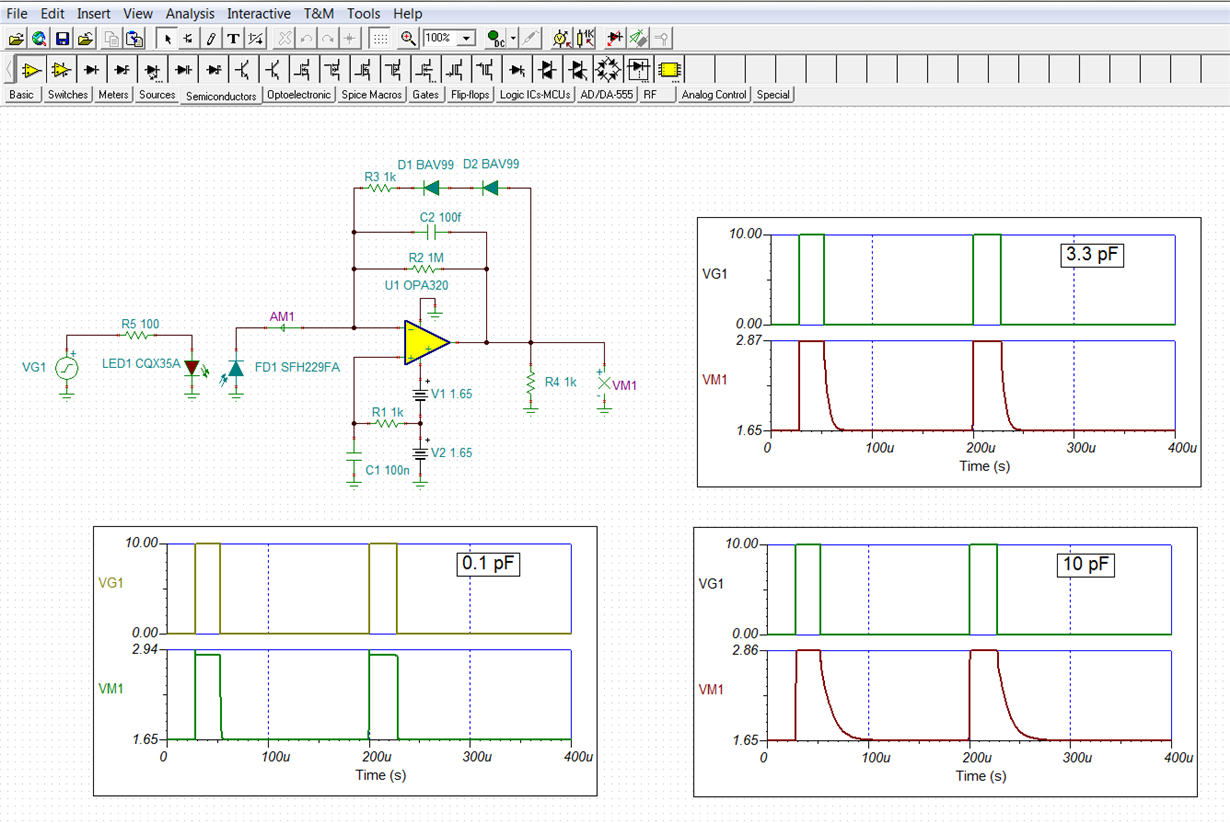Other Parts Discussed in Thread: TINA-TI, LMH6644, TLV431
I have a very basic photodiode amplifier using an OPA320, connected like the following
which exhbits a behavior that I can't completely understand.
The photodiode is filtered from visible light, and a nearby light source is a high current pulsed IR emitter (around 0.5 Amps) for a relatively short time, 28 us pulses over 225 us of period. I have a measure to take place when this IR source is OFF (yes, this is not the emission I'm measuring).
My problem is that besides I'm synchronized with the "disturbing" light (I generate it for another purpose), I need to measure a secondary tiny light level within 30-40 us after I turned this lighthouse off.
Note: this secondary signal isn't even "visible" at the output of this amplifier, since it needs further amplification.
The circuit above is first limited to avoid saturation of the OA, even though with OPA320 this shouldn't be an issue (should come out of saturation way faster than my 30 us to a measure). I expected the level to take some time (microseconds?) to settle at the low light/dark level, after being dazzled, but what I obtain is something like this
The yellow trace is the analog output, and the green one is the high power LED control (with a simple on/off control).
Why does the output take so long to settle at the dark level? What puzzles me more is the shape of the decaying curve, which isn't related to feedback capacitor.
I inherited this circuit from an older design, so I can't even explain why with some very similar setup it worked in the past, while I'm apparently unable to make it work!
The original circuit used also another classic scheme, with a discrete JFET stage inserted between the PD and the OA, but that doesn't change the output result of this amplifier.






